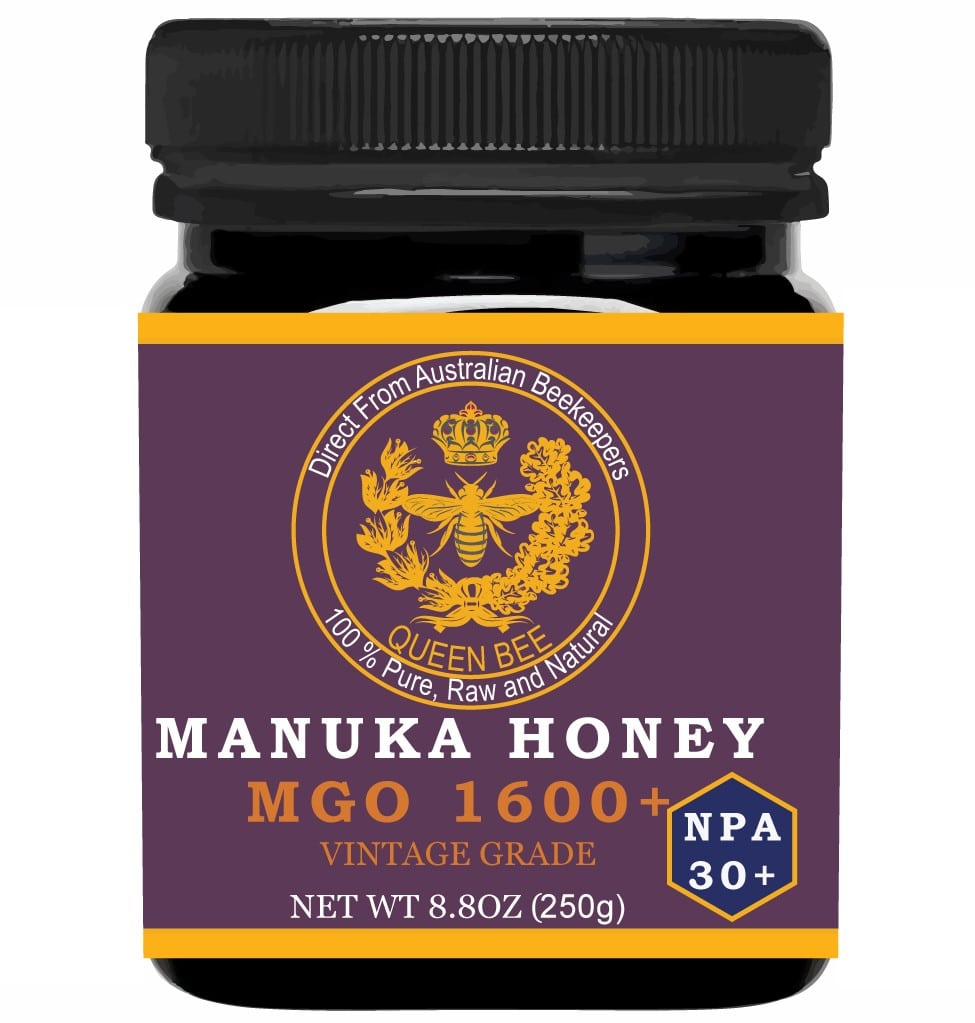
What Is MGO in Manuka Honey? A Complete Guide for Beginners
If you've ever shopped for Manuka honey, you've likely seen terms like MGO 400+, MGO 1000+, or even MGO 1600+ on the jar. But what does MGO really mean? And why is it so important when choosing Manuka honey?
In this beginner-friendly guide, we'll break down what MGO stands for, how it's measured, how it compares to the UMF rating system, and how Manuka honey is different from regular raw honey.
🔬 What Does MGO Stand For?
MGO stands for Methylglyoxal, a naturally occurring compound found in Manuka honey. It’s the key antibacterial component responsible for Manuka’s powerful healing properties.
Unlike ordinary honey, Manuka’s high MGO content gives it strong antimicrobial effects — making it useful for:
- Fighting bacteria and viruses
- Supporting immune health
- Promoting skin healing
MGO levels vary by batch and are often lab-tested and labeled on the jar (e.g., MGO 100+, MGO 400+, MGO 1600+). The higher the number, the more potent the honey.
🧪 What Does MGO 1600 Mean?
When you see MGO 1600+, it means the honey contains at least 1600 mg of Methylglyoxal per kilogram — making it an extremely potent form of Manuka honey.
This grade is usually:
- Sourced from wild, high-density Manuka regions in New Zealand
- Used in medical-grade applications, skincare, or high-immunity support
- Premium-priced due to rarity and effectiveness
Fun Fact: MGO 1600+ is one of the strongest commercially available grades of Manuka honey in the world.
🆚 MGO vs UMF: What’s the Difference?
Many consumers get confused between MGO and UMF (Unique Manuka Factor). Here’s a quick breakdown:
| MGO Rating | Approx. UMF Equivalent |
|---|---|
| MGO 83+ | UMF 5+ |
| MGO 263+ | UMF 10+ |
| MGO 514+ | UMF 15+ |
| MGO 829+ | UMF 20+ |
| MGO 1200+ | UMF 25+ |
MGO measures only methylglyoxal.
UMF measures MGO plus other key markers like leptosperin and DHA, offering a more complete quality indicator.
Both systems are trustworthy, but MGO is easier to understand and more widely used on products.
🍯 How Is Manuka Honey Different from Raw Honey?
Manuka honey isn’t just raw honey from New Zealand. It’s made by bees that pollinate the Manuka bush (Leptospermum scoparium), which grows natively in New Zealand and parts of Australia.
Here’s how it differs:
| Manuka Honey | Raw Honey |
|---|---|
| Contains high MGO levels | Low to no MGO |
| Strong antibacterial power | Mild antimicrobial effects |
| Graded (MGO/UMF) | Not usually graded |
| Thicker, earthy taste | Lighter, sweeter taste |
| More expensive | Generally affordable |
If you're looking for medicinal benefits, Manuka honey with high MGO is the better choice.
💡 Final Thoughts: How to Choose the Right MGO Level
For daily wellness, an MGO level of 100+ to 400+ is often sufficient.
For immune boosting, skincare, or specific health uses, MGO 800+ and above is ideal.
And if you want the absolute best — go for MGO 1600+ like what we offer at Evithi.
🌿 Explore Our MGO 1600+ Manuka Honey
Looking for one of the highest strength honeys available?
Check out our Queen Bee MGO 1600+ Manuka Honey – certified, raw, and sourced straight from New Zealand's pristine landscapes.
Shop Now at Evithi

QIRfuQFw